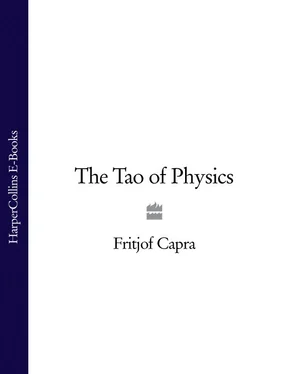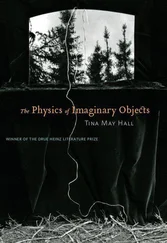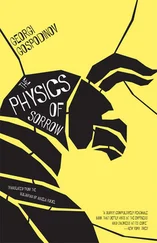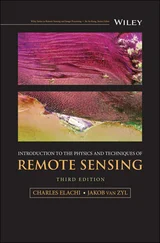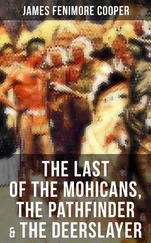A word of caution should perhaps be added here. The emphasis on seeing in mystical traditions should not be taken too literally, but has to be understood in a metaphorical sense, since the mystical experience of reality is an essentially non-sensory experience. When the Eastern mystics talk about ‘seeing’, they refer to a mode of perception which may include visual perception, but which always and essentially transcends it to become a nonsensory experience of reality. What they do emphasize, however, when they talk about seeing, looking or observing is the empirical character of their knowledge. This empirical approach of Eastern philosophy is strongly reminiscent of the emphasis on observation in science and thus suggests a framework for our comparison. The experimental stage in scientific research seems to correspond to the direct insight of the Eastern mystic, and the scientific models and theories correspond to the various ways in which this insight is interpreted.
The parallel between scientific experiments and mystical experiences may seem surprising in view of the very different nature of these acts of observation. Physicists perform experiments involving an elaborate teamwork and a highly sophisticated technology, whereas mystics obtain their knowledge purely through introspection, without any machinery, in the privacy of meditation. Scientific experiments, furthermore, seem to be repeatable any time and by anybody, whereas mystical experiences seem to be reserved for a few individuals at special occasions. A closer examination shows, however, that the differences between the two kinds of observation lie only in their approach and not in their reliability or complexity.
Anybody who wants to repeat an experiment in modern subatomic physics has to undergo many years of training. Only then will he or she be able to ask nature a specific question through the experiment and to understand the answer. Similarly, a deep mystical experience requires, generally, many years of training under an experienced master and, as in the scientific training, the dedicated time does not alone guarantee success. If the student is successful, however, he or she will be able to ‘repeat the experiment’. The repeatability of the experience is, in fact, essential to every mystical training and is the very aim of the mystics’ spiritual instruction.
A mystical experience, therefore, is not any more unique than a modern experiment in physics. On the other hand, it is not less sophisticated either, although its sophistication is of a very different kind. The complexity and efficiency of the physicist’s technical apparatus is matched, if not surpassed, by that of the mystic’s consciousness—both physical and spiritual—in deep meditation. The scientists and the mystics, then, have developed highly sophisticated methods of observing nature which are inaccessible to the layperson. A page from a journal of modern experimental physics will be as mysterious to the uninitiated as a Tibetan mandala. Both are records of enquiries into the nature of the universe.
Although deep mystical experiences do not, in general, occur without long preparation, direct intuitive insights are experienced by all of us in our everyday lives. We are all familiar with the situation where we have forgotten the name of a person or place, or some other word, and cannot produce it in spite of the utmost concentration. We have it ‘on the tip of our tongue’ but it just will not come out, until we give up and shift our attention to something else when suddenly, in a flash, we remember the forgotten name. No thinking is involved in this process. It is a sudden, immediate insight. This example of suddenly remembering something is particularly relevant to Buddhism which holds that our original nature is that of the enlightened Buddha and that we have just forgotten it. Students of Zen Buddhism are asked to discover their ‘original face’ and the sudden ‘remembering’ of this face is their enlightenment.
Another well known example of spontaneous intuitive insights are jokes. In the split second where you understand a joke you experience a moment of ‘enlightenment’. It is well known that this moment must come spontaneously, that it cannot be achieved by ‘explaining’ the joke, i.e. by intellectual analysis. Only with a sudden intuitive insight into the nature of the joke do we experience the liberating laughter the joke is meant to produce. The similarity between a spiritual insight and the understanding of a joke must be well known to enlightened men and women, since they almost invariably show a great sense of humour. Zen, especially, is full of funny stories and anecdotes, and in the Tao Te Ching we read, ‘If it were not laughed at, it would not be sufficient to be Tao.’ 13
In our everyday life, direct intuitive insights into the nature of things are normally limited to extremely brief moments. Not so in Eastern mysticism where they are extended to long periods and, ultimately, become a constant awareness. The preparation of the mind for this awareness—for the immediate, nonconceptual awareness of reality—is the main purpose of all schools of Eastern mysticism, and of many aspects of the Eastern way of life. During the long cultural history of India, China and Japan, an enormous variety of techniques, rituals and art forms have been developed to achieve this purpose, all of which may be called meditation in the widest sense of the word.
The basic aim of these techniques seems to be to silence the thinking mind and to shift the awareness from the rational to the intuitive mode of consciousness. In many forms of meditation, this silencing of the rational mind is achieved by concentrating one’s attention on a single item, like one’s breathing, the sound of a mantra, or the visual image of a mandala. Other schools focus the attention on body movements which have to be performed spontaneously without the interference of any thought. This is the way of the Hindu Yoga and of the Taoist Tai Chi Ch’uan. The rhythmical movements of these schools can lead to the same feeling of peace and serenity which is characteristic of the more static forms of meditation; a feeling which, incidentally, may be evoked also by some sports. In my experience, for example, skiing has been a highly rewarding form of meditation.
Eastern art forms, too, are forms of meditation. They are not so much means for expressing the artist’s ideas as ways of self-realization through the development of the intuitive mode of consciousness. Indian music is not learned by reading notes, but by listening to the play of the teacher and thus developing a feeling for the music, just as the T’ai Chi movements are not learned by verbal instructions but by doing them over and over again in unison with the teacher. Japanese tea ceremonies are full of slow, ritualistic movements. Chinese calligraphy requires the uninhibited, spontaneous movement of the hand. All these skills are used in the East to develop the meditative mode of consciousness.
For most people, and especially for intellectuals, this mode of consciousness is a completely new experience. Scientists are familiar with direct intuitive insights from their research, because every new discovery originates in such a sudden non-verbal flash. But these are extremely short moments which arise when the mind is filled with information, with concepts and thought patterns. In meditation, on the other hand, the mind is emptied of all thoughts and concepts and thus prepared to function for long periods through its intuitive mode. Lao Tzu speaks about this contrast between research and meditation when he says:
He who pursues learning will increase every day;
He who pursues Tao will decrease every day. 14
When the rational mind is silenced, the intuitive mode produces an extraordinary awareness; the environment is experienced in a direct way without the filter of conceptual thinking. In the words of Chuang Tzu, The still mind of the sage is a mirror of heaven and earth—the glass of all things.’ 15 The experience of oneness with the surrounding environment is the main characteristic of this meditative state. It is a state of consciousness where every form of fragmentation has ceased, fading away into undifferentiated unity.
Читать дальше
